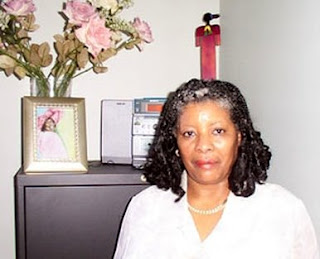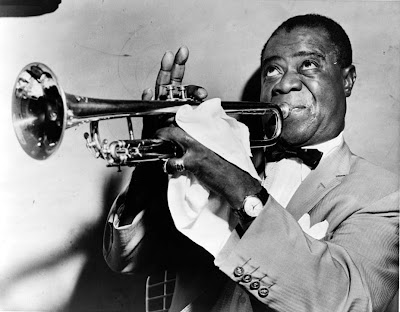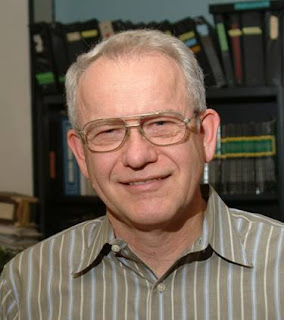
HIV/AIDS researchers - (L-R) Seema S. Ahuja, MD, assistant professor in the department of medicine; Sunil K. Ahuja, MD, assistant professor in the departments of medicine and microbiology; and Enrique Gonzalez, MD, and Srinivas Mummidi, DVM, PhD, both postdoctoral fellows in the department of medicine. | A variant of a gene found only in people of African ancestry increases the odds of becoming infected with the human immunodeficiency virus (HIV-1) by 40 percent, according to a long-term study of African Americans reported in the [date] issue of the journal Cell Host & Microbe, a publication of Cell Press. However, once people are infected, the same variant seems to protect against progression of the disease, allowing those who carry it to live about two years longer. |
" It's well-known that individuals vary in their susceptibility to HIV and that after infection occurs, the disease progresses at variable rates," said Sunil Ahuja of South Texas Veterans Health Care System and University of Texas Health Science Center at San Antonio. "The mystery of variable infection and progression was originally thought to be mainly the result of viral characteristics, but in recent years it has become evident that there is a strong host genetic component."
The new discovery is one of few genetic risk factors for HIV found only in people of African descent, the researchers added. If the new findings can be extrapolated to Africa, where about 90 percent of all people carry the variant, it may be responsible for 11 percent of the HIV burden there, they estimate.
The gene in question encodes a protein found mainly at the surface of red blood cells, which is called Duffy Antigen Receptor for Chemokines (DARC). The DARC variant found commonly in people of African ancestry leaves them without this particular red blood cell receptor. That so-called "DARC-negative" condition has been well studied because it also confers protection against infection by a malaria parasite known as Plasmodium vivax. (P. vivax is unfortunately not the parasite responsible for millions of malaria deaths each year in Africa today. The researchers speculate that this DARC gene variant may have risen to such high frequency as protection against some other, more lethal strain of malaria that existed at some time in the past.)
" The big message of this paper is that something that protected people against malaria in the past is now leaving them more susceptible to HIV," said Robin Weiss of University College London. "After thousands of years of adaptation, this Duffy variant rose to high frequency because it helped protect against malaria," added Matthew Dolan of the Wilford Hall United States Air Force Medical Center and San Antonio Military Medical Center. "Now, with another global pandemic on the scene, this same variant renders people more susceptible to HIV. It shows the complex interplay between historically important diseases and susceptibility in contemporary times."
Earlier studies had suggested that HIV can bind to red blood cells via DARC. In accord with its name, DARC also binds a wide array of inflammatory molecules known as chemokines, including one called CCL5, which is highly effective in suppressing replication of HIV-1.
Those hints led the researchers to wonder just what the impact of DARC on HIV-AIDS might be. In cell culture, they found further evidence that HIV binds to DARC on red cells. "We started looking at red cells together with HIV and, sure enough, the virus attached," Weiss said. "The DARC molecule on red cells in cell culture then transferred the virus to lymphocytes to get infected." CD4+ T lymphocytes are white blood cells that are a primary target of HIV infection.
When chemokines that also bind DARC were added to the mix, less HIV-1 bound to the red cells, confirming that the virus and chemokines were in competition for the DARC receptor. "Duffy acts somewhat like a sponge," Ahuja said. "It binds all these chemokine molecules and that binding also extends to HIV, setting up a triumvirate of interactions between DARC, chemokines and virus."
The researchers next looked to a large cohort of people in the U.S. Air Force, including more than 1,200 who are HIV positive, who have been followed for nearly 22 years. This group is ideal for evaluating the role of such a gene because this cohort is ethnically balanced and without many of the factors, including differences in economic status and access to health care, that would generally confound any genetic effect, Dolan explained.
Those studies showed that the prevalence of the "DARC-negative" variant in African Americans was greater amongst those with HIV than in those without. Although the DARC-negative genotype was associated with an increased risk of acquiring HIV infection, within the context of established infection a contrary result was observed: people with that variant had a slower disease course, they report.
" The parts of a car that get it into gear are separate from those that get it moving once in gear," Ahuja said. "A similar analogy applies to HIV; the factors that influence its transmission are not necessarily the same as those that influence disease progression."
Although it isn't yet entirely clear how exactly DARC mediates opposing effects during HIV acquisition and disease, the researchers suspect those with the DARC receptor are initially protected because they also have more HIV suppressive chemokines in their system. Once infected, however, the balance turns in favor of those without DARC as increased chemokine levels may promote inflammation in those with DARC. Also, once the virus reaches higher levels, it is more likely to displace chemokines bound to DARC on red cells, further exacerbating inflammation. And during established infection, HIV bound to DARC on red cells is poised for delivery to CD4+ T cells, the researchers said.
The findings help answer an earlier conundrum: the researchers had previously shown that people with a particular variant of the chemokine CCL5 have a faster rate of HIV progression. But, that pattern only held in European Americans, not in African Americans. They now show that the disease-accelerating effect of the CCL5 variant is evident only in DARC-expressing and not in DARC-negative HIV-positive individuals. In other words, the unmeasured effects of DARC amongst African Americans in the earlier study "masked" the influence of CCL5, exemplifying the importance of accounting for such complex gene-gene interactions in genetic studies.
" The results underscore that genetic variants that influence transmission and disease progression can differ in their frequency among different populations, with possible impacts on the heterogeneity of HIV disease burden--not just at the level of individuals but also populations," they concluded. They may also have implications for evaluating the efficacy of HIV vaccines.
###
The researchers include Weijing He, Veterans Administration Research Center for AIDS and HIV-1 Infection, South Texas Veterans Health Care System, San Antonio, TX, University of Texas Health Science Center, San Antonio, TX , Stuart Neil, University College London, London, UK, Hemant Kulkarni, Veterans Administration Research Center for AIDS and HIV-1 Infection, South Texas Veterans Health Care System, San Antonio, TX, University of Texas Health Science Center, San Antonio, TX , Edward Wright, University College London, London, UK, Brian K. Agan, Infectious Disease Clinical Research Program, Uniformed Services University, Bethesda, MD, Wilford Hall United States Air Force Medical Center, Lackland Air Force Base, TX , San Antonio Military Medical Center, Fort Sam Houston, TX; Vincent C. Marconi, Infectious Disease Clinical Research Program, Uniformed Services University, Bethesda, MD , Wilford Hall United States Air Force Medical Center, Lackland Air Force Base, TX , San Antonio Military Medical Center, Fort Sam Houston, TX; Matthew J. Dolan, Infectious Disease Clinical Research Program, Uniformed Services University, Bethesda, MD, Wilford Hall United States Air Force Medical Center, Lackland Air Force Base, TX, San Antonio Military Medical Center, Fort Sam Houston, TX; Robin A. Weiss, University College London, London, UK; and Sunil K. Ahuja, Veterans Administration Research Center for AIDS and HIV-1 Infection, South Texas Veterans Health Care System, San Antonio, TX, University of Texas Health Science Center, San Antonio, TX , University of Texas Health Science Center, San Antonio, TX.
Contact: Cathleen Genova
cgenova@cell.com 617-397-2802
Cell Press



































